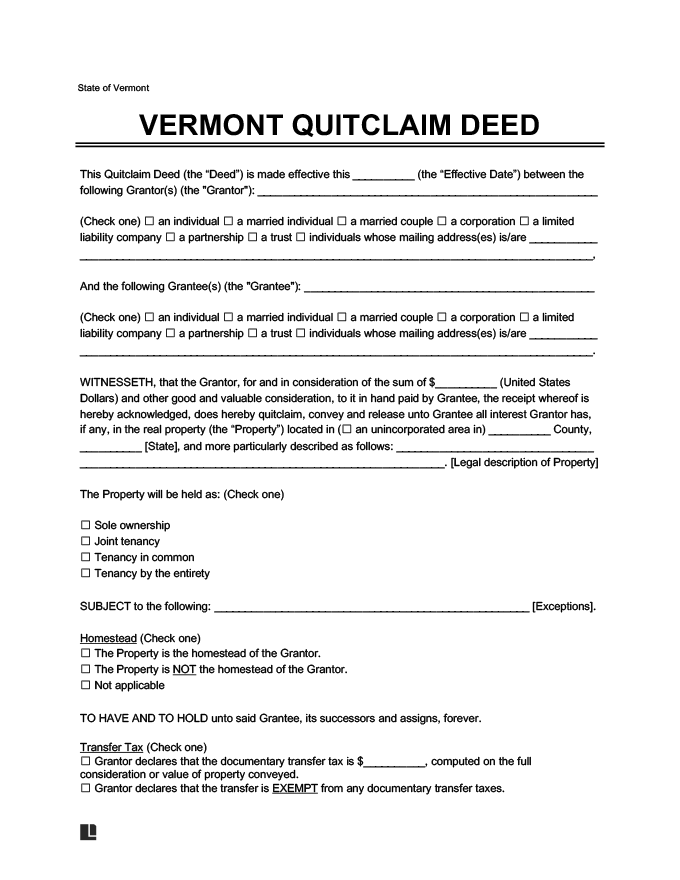When you use a quitclaim deed in Vermont, you can complete the property transfer process without providing warranties or dedicating time to the title search process. As the grantor, you can ensure the transfer is valid and enforceable by following these steps when filing your quitclaim deed.
Step 1: List the Introductory Details
Begin by listing the name and address of the person preparing the document. The preparer may be you as the grantor or a professional drafter or attorney.
You can also fill out the “After Recording, Return To” information. Identify who you’d like to receive a copy of the recorded quitclaim deed after the town clerk finishes the recording process.
Step 2: Note the Consideration
Report the payment from the grantee to the grantor. Write this number out and include it in numerical form (e.g., “Ten thousand dollars ($10,000)”). If you’re transferring property without the grantee providing consideration, you can put $0 or a nominal amount like $10.
Step 3: Write Both Parties’ Information
Write the grantee’s and grantor’s names and addresses (including the cities, counties, and states for the addresses).
Step 4: Add the Property’s Legal Description
Add the address and information about the property as an identifying legal description. These details can include parcel numbers, language from the original deed, or any other information that clarifies the property being conveyed.
Step 5: Sign the Deed
The grantor should provide an original signature on the deed. If there are multiple grantors, you can add additional signature blocks. A notary public will witness the signing and notarize the document with their notary seal, ID number, and commission expiration date.
Step 6: Complete the Transfer Tax Form
Even if you’re gifting the property to the grantee without payment, Vermont requires every deed to be accompanied by a property transfer tax return. Download and fill out Form PTT-172 and bring it with you when filing.
Step 7: File the Deed
Finally, you’ll need to send the notarized quitclaim deed to the town clerk’s office in the city where the property is physically located. Each town clerk has specific requirements and processes. Hence, it’s a good idea to preemptively contact the office to determine fees, additional documents you may need, and procedures you’ll need to follow.
After the clerk’s office has recorded the quitclaim deed, they’ll mail a copy to you and anyone else who included their information in the “After Recording, Return To” section.
